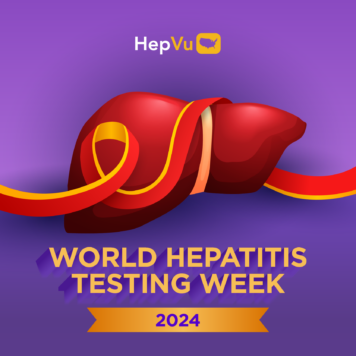Tatyana Kushner, MD is the founder of the Women’s Liver Clinic at Mount Sinai Hospital and Assistant Professor of Medicine, Liver Diseases, and Obstetrics, Gynecology and Reproductive Science at the Icahn School of Medicine at Mount Sinai.
Q: You have spent your career focused on the management of Hepatitis C, Hepatitis B, and other liver diseases during pregnancy. What led you to this focus?
I find working with women during pregnancy a rewarding experience because it is a time where women are really engaged in their health care. Pregnancy allows the opportunity to work with women and set them on the path towards good health in the future. Many pregnant women may have health insurance from Medicaid that only lasts during the pregnancy and the postpartum period, depending on the state.
I was further drawn to working with patients during pregnancy, both in research and in a clinical setting, because we know that pregnancy can affect the course of viral hepatitis and liver disease. Conversely, viral hepatitis can affect the course of pregnancy. For example, we know that Hepatitis B can commonly flare or become more active during pregnancy. Additionally, we know that Hepatitis C is associated with an increased risk of cholestasis of pregnancy (a condition in which the flow of bile is affected by the pregnancy hormones), which can lead to serious complications to the developing baby. However, there are still many unanswered questions regarding the impact of viral hepatitis on pregnancy that need to be answered through research. In the meantime, it is crucial that we counsel women about what we know of the potential impacts of liver diseases on their pregnancy.
Q: You recently published an article on Hepatitis B among women of childbearing age in Clinical Infectious Diseases. In its background, you write that “there has been no recent, comprehensive, national evaluation of the changing prevalence of Hepatitis B.” Can you explain what makes evaluation of Hepatitis B prevalence so difficult?
Anytime you want to do a national prevalence estimate of anything, it’s challenging—especially in our U.S. health care system because it is very fragmented in contrast to some other countries. With varied practices in testing and treatment across health settings, it is challenging to get an understanding of what’s going on on a national scale. Furthermore, viral hepatitis screening and surveillance in the U.S. is underfunded and underdeveloped, so we are likely missing data and underdiagnosing individuals with viral hepatitis, particularly among those groups at highest risk, such as immigrant patient populations who may not have access to health insurance.
Previous studies have used databases such as the National Health and Nutrition Examination Survey (NHANES) to estimate national rates for Hepatitis B and other diseases by performing a random sampling of different segments of the population and extrapolating the data to estimate national prevalence. However, this type of study excludes very important groups. For example, people housed in institutions, people experiencing homelessness, and people in prison are not included in the NHANES estimates. Therefore, we don’t know for sure if the database is really representative of our whole country.
There has not been as much attention on the changing prevalence of Hepatitis B in the U.S. because our country is not an endemic region for Hepatitis B, compared to Asia and Africa—where it is much more common. Though there may not be as much attention to Hepatitis B domestically, my team felt that it was important to examine Hepatitis B in the US., especially given the significant increases in Hepatitis C rates related to the opioid epidemic.
Q: The study covered a seven-year period from 2011 to 2017, studying women between 15 and 44 years old who had been tested for Hepatitis B with four sub-categories: acute Hepatitis B infection, chronic Hepatitis B infection, Hepatitis B exposure, and Hepatitis B vaccine-derived immunity. Could you highlight the key findings within each of these four categories and explain how the findings might inform the ways that researchers, providers, and other stakeholders might address Hepatitis B prevention and care in the future?
My team wanted to look at Hepatitis B data as comprehensively as possible. We felt that it was very important to identify not only individuals who have chronic Hepatitis B, but also those who have signs of exposure to Hepatitis B. In some ways, one’s exposure to Hepatitis B is a better reflection of its burden in the U.S. We also looked at those who met criteria for acute Hepatitis B as well as Hepatitis B immunity. We separated the women in our study based on birth year because in November 1991, the Advisory Committee on Immunization Practices (ACIP) recommended universal Hepatitis B vaccination at birth and in 1997, the ACIP subsequently recommended Hepatitis B vaccination for adolescents who did not receive the vaccination at birth. We also looked at women who were born prior to 1980, as they would not have benefited from either of these recommendations.
We found that on a national level, there are lower rates of Hepatitis B across the board for women who were born in 1992 or later when the universal Hepatitis B vaccine was recommended for all newborns. This population, also known as the birth-dose cohort, had lower rates of chronic Hepatitis B, acute Hepatitis B, and exposure to Hepatitis B. This finding proves that a universal vaccine birth dose for Hepatitis B works.
Women who were born 1980 or later and received the vaccine later, also known as the adolescent-dose cohort, had higher rates of Hepatitis B than those of the birth-dose cohort. However, the cohort of women who were born prior to 1980, who did not benefit from either recommendation – the partial vaccination cohort—had the highest rates of Hepatitis B. Through these results, we can clearly observe that there’s a benefit to national recommendations for vaccination.
Looking at trends over time among the sample of women who sought medical care and tested for Hepatitis B in the study, we saw that there has been a gradual decline in chronic Hepatitis B. For acute Hepatitis B, the numbers were relatively small, so we can’t say that there’s a significant change over time. When we searched for opposing trends on a state-specific level, we saw some Appalachian states actually had increasing rates of Hepatitis B over time instead of decreasing or stable rates among the same group of women. These states closely paralleled those states with the highest rates of opioid abuse and Hepatitis C among women of childbearing age, suggesting that the opioid epidemic may be impacting Hepatitis B transmission and exposure as well.
Q: The COVID-19 pandemic has significantly disrupted the health care system. How have you seen COVID-19 impact Hepatitis B and Hepatitis C screening and care, especially for pregnant women and other women of childbearing age, in your work?
Some of the resources and public health programs that had been dedicated to working towards Hepatitis C elimination and Hepatitis B screening and surveillance have been reallocated to address COVID-19. In fact, many publications predict that our ability to accomplish Hepatitis C elimination by 2030 will be significantly delayed due to decreased testing, surveillance, and linkage to care for viral hepatitis.
On a clinical basis, it has been challenging because patients are often worried about coming into care during a pandemic, so we have adapted by doing more telemedicine. This past year, the Centers for Disease Control and Prevention (CDC) and the U.S. Preventive Services Task Force (USPSTF) both recommended Hepatitis C screening for all adults aged 18 to 79 years old, and the CDC’s guidelines also expanded to recommend universal screening for pregnant women. However, I feel that these updated recommendations did not gather enough attention to reach maximum impact because public focus was on COVID-19 at the time.
Q: The latest CDC Hepatitis C screening recommendations call for screening of all pregnant women during each pregnancy. You’ve previously shared your support for screening of pregnant women, and noted that detecting Hepatitis C during pregnancy would not only benefit mothers, but their children as well. What steps can be taken to ensure that these new guidelines are widely implemented across the United States?
In order to implement testing nationally, we need buy-in from the American College of Obstetrics and Gynecology (ACOG). The ACOG is currently reviewing CDC and the USPSTF’s updated guidelines. The obstetricians are the actual providers who are doing the testing and they follow the guidelines set forth by their society, but ACOG has not yet recommended universal screening.
Education across diverse health settings is also crucial to the successful implementation of widespread testing and care. Perhaps we will need to brainstorm creative methods to meet these recommendations and improve Hepatitis C outcomes among pregnant women, but we need the ACOG’s support first. With time, I am hopeful that these recommendations will garner the necessary attention to make a genuine impact on the viral hepatitis landscape.



